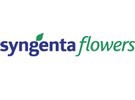[ad_1]
Syngenta Flowers in De Lier (the Netherlands), homes a specialised Younger Plant Manufacturing middle. Yearly, a variety of younger vegetation, akin to bedding vegetation, perennials and potted vegetation are produced throughout varied areas of greater than 25 hectares. Through the use of optimum cultivation and distribution strategies for younger vegetation, supported by revolutionary applied sciences like Xtrays and Xcarriers, many species and types of younger vegetation are grown from each seeds and cuttings.
As a part of the worldwide Syngenta group, which has 28,000 workers in 90 international locations, the De Lier institution contributes to Syngenta’s mission: unlocking the complete potential of vegetation, maximising yields, defending the surroundings and bettering high quality of life worldwide.
The problem
Syngenta Flowers confronted the problem of effectively and precisely managing the return circulate of a brand new kind of plant trays for its Younger Plant Manufacturing. Their pool of Xtrays was expanded with 20% new Xcarriers. The latter should not appropriate for laundry within the present washing station and require a separate therapy. Manually separating the brand new and previous Xtrays within the storage corridor was a really time-consuming and error-prone course of. Syngenta due to this fact regarded for an answer to optimize its return circulate with the mixing of the brand new Xtrays as a lot as potential.
The answer
The Xcarriers are outfitted with sturdy UHF RFID labels with a studying distance of as much as 12 meters and the next studying velocity. These labels are generally utilized in logistics and retail environments.

Upon arrival on the warehouse, the Xtrays are scanned by an RFID gate, which is provided with superior RFID readers and antennas to allow computerized detection and registration. An activation sensor ensures that the scanning course of begins as quickly as a pallet arrives.
The brand new Xtrays are despatched to a separate therapy location, whereas the previous Xtrays are directed to the present washing station. RFID permits the Xtrays to be mechanically and appropriately processed from the start and instantly registered on the appropriate location with none handbook intervention.
A cell RFID handheld scanner can be utilized for extra scanning. A number of RFID tags will be learn concurrently right here too, with out requiring a line-of-sight.
The Aucxis HERTZ Middleware was used to combine the system with Syngenta. Aucxis supplied a customized visualization that shows the precise information for every kind of Xtray. All scan outcomes are transferred to Syngenta’s central ERP system.
The consequence
Velocity and effectivity: “Guide counting is now not vital; you’ll be able to scan as much as 750 Xtrays concurrently, considerably dashing up the method.”
Logistics flows: “The scanned Xtrays are instantly directed to the right washing station, leading to extra sustainable and environment friendly return logistics.”
Double-check: “Errors are prevented by way of extra checks with a handheld through the return course of.”
Dependable information: “Due to seamless integration with the present Oracle Cloud database, everybody at all times has entry to dependable real-time information.”
For extra info:
Aucxis
[email protected]
www.rfid.aucxis.com

Syngenta Flowers
www.syngentaflowers.com
[ad_2]


